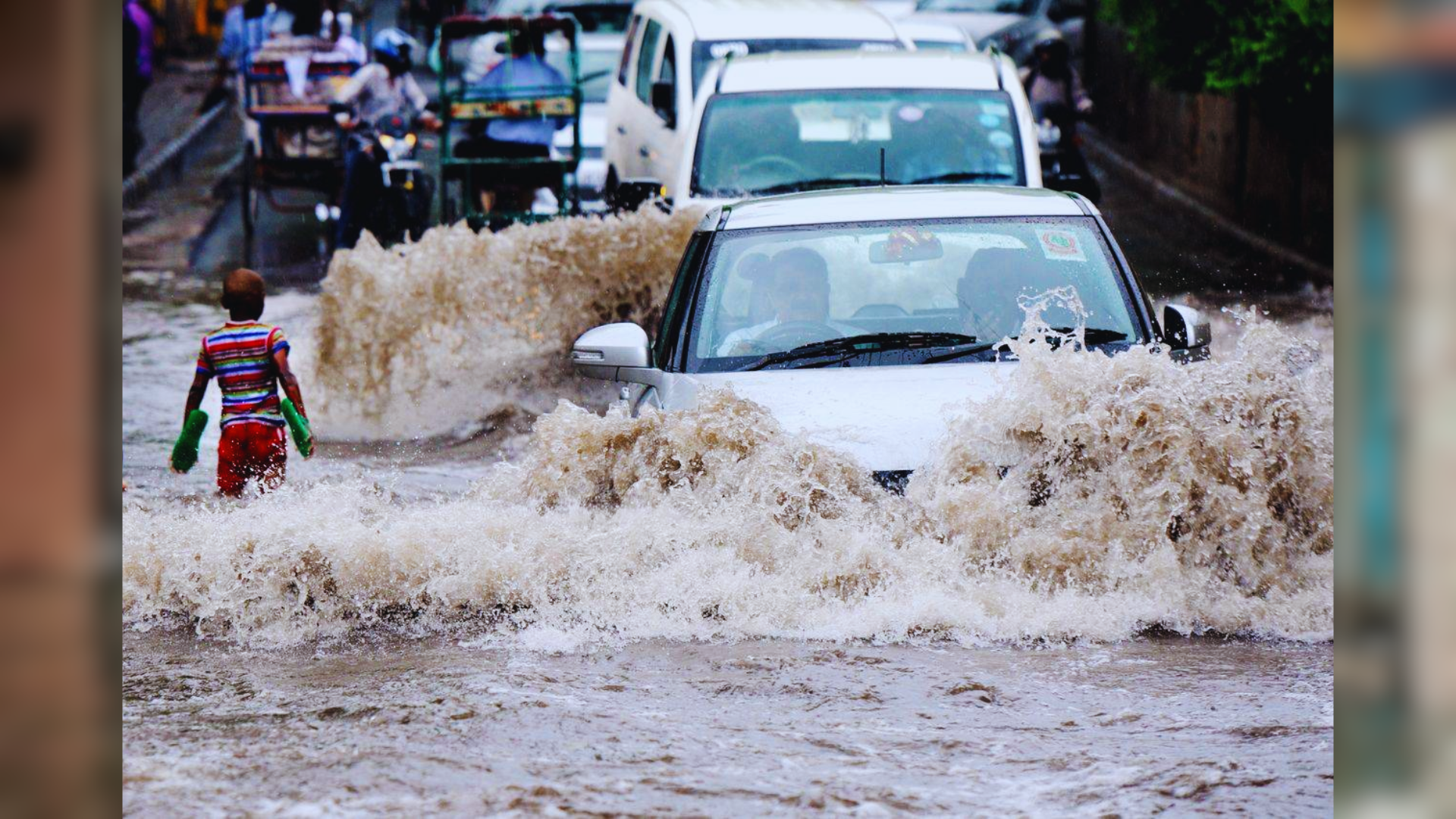Delhi has been dealing with intense heat with scorching high temperatures that had reached a peak crossing 50 degrees Celsius, and now as rain makes its way through the northern part of the country, residents in Delhi are facing the problem of severe water-logging which has wreaked havoc in the capital.
Issues Responsible For Flooding In Delhi
The Delhi Flood Plan
With this backdrop the authorities have come up with the Delhi Flood Plan that comprises of a 5-point strategy to mitigate flooding in the city.
- First, a Delhi Peace Pact is proposed, urging BJP, Congress, and AAP to develop a Common Minimum Programme (CMP) for effective collaboration and to rovide subsidy for agricultural machinery for proper crop residue management.

- Second, the CMP will outline unified measures for important issues like water, air pollution and drainage systems which will inturn mitigate any future flooding episode.

- Third, a High-Power Coordination Committee is to be formed, including the LG, AAP ministers, MPs, central representatives, officials, mayors, NDMC, and MCD, ensuring seamless coordination.

- The plan also includes immediate measures to address the current flooding scenario.

- Lastly, Immediate requisitions will be made for desilting, excavators, pumps, and bulldozers to enhance the city’s flood response capabilities.

Main Flooding Zones
An in-depth analysis of the flood zoning pattern shows that zones that are under high risk are areas that have been previously identified as unplanned or poorly planned areas having a high density of population and subpar housing standards.
The main flooding zones fall under the areas of North-Delhi and Trans Yamuna Area, and some of the colonies are still 3-4 meters below the 1987 flood threshold.

Most Affected Areas In Delhi
The rains have caused widespread chaos and several parts of the capital are affected by it. One of the worst affected areas was Terminal-1 of the IGI airport, where the roof of the airport collapsed, claiming the life of a cab driver at the Terminal and injuring several others.
The main flooding areas include Minto Road, Kartavya Path, Outer Ring Road, Mathura Road and ITO


Worst Affected Areas In 2023
The heavy rainfall pouring down in Delhi echo’s past memories of submerged roadways, flooded underpasses, vehicles stuck in water, and prolonged traffic congestion. The areas that were the most affected last year were Pragati Maidan, Old Railway Bridge, Yamuna Bazaar, Geeta Colony, ITO, and Mayur Vihar Phase-1.
Major Causes Of Flooding In Urban Areas
A significant phenomenon that has been increasingly observed in recent years is local flooding, particularly in urban areas. This issue is exacerbated by several key factors:
- Impervious Surfaces: Urban areas are dominated by impervious surfaces such as roads, pavements, and buildings. These surfaces prevent water from infiltrating the ground, leading to high surface water runoff rates. The rapid development and loss of soft landscapes further contribute to this issue, resulting in flash floods even after moderate rainfall.
- High River Levels: Urban flooding is often worsened by rivers flowing at high levels within their embankments. When rivers are already high, additional precipitation causes water to overflow into city areas. This water can become trapped, taking several days to be mechanically pumped out and the situation to be brought under control.
- Drainage System Overload: The city’s drainage systems, including its 18 major drains, are often under significant pressure from the effluent discharge of the city. During heavy rainfall, these drains can experience reverse flow from swollen rivers such as the Yamuna, leading to their banks being overtopped and flooding the surrounding neighborhoods.
Delhi LG Meets With The Officials
Delhi Lieutenant Governor VK Saxena convened an emergency meeting of all the concerned agencies of the Delhi government, including the Delhi Jal Board (DJB), Public Works Department (PWD), Irrigation and Flood Control Department (IFC), Delhi Police, Municipal Corporation of Delhi (MCD), National Disaster Management Control (NDMC), Delhi Development Authority (DDA).
The meeting reviewed the situation arising due to waterlogging, overflow of unsilted drains, and the backflow from the clogged sewer systems as the pre-monsoon rains cover the city.
Additionally, he outlined 11 immediate action directives. Among the key measures was the establishment of a 24/7 emergency control room, with the control room number made available to the public for reporting waterlogging incidents.
He also called for the use of mobile pumps, instructed traffic police to issue regular advisories in the event of waterlogging, and directed the Irrigation and Flood Control Department to maintain regular communication with counterparts in Haryana and the upper regions of Himachal Pradesh to monitor rainfall levels and discharges from the Hathnikund barrage.
Broken All Records
The capital has received a staggering 228.1 mm of rainfall within the time frame of 24 hours, just a few weeks after the capital went through one of the hottest periods in its history. This rainfall has surpassed Delhi’s average rainfall for the month of June, in fact, the water levels have not surged this much in the last 88 years, and the relief that the rains were supposed to bring turned into widespread disruption.
According to the India Meteorological Department (IMD), the heavy rainfall recorded a 266% departure from the usual levels for this season. In the vicinity of Delhi airport, rainfall reached 148.5 mm within three hours on Friday, surpassing the total rainfall recorded for June in the previous year, which was 101.7 mm.
Lessons to be learned
Sustainable urban planning is the core that needs to be strengthened, this includes proper designing of Drainage systems and implementation of flood control measures. Construction activity needs to be regulated and encroachments on floodplains and river beds to be prohibited. Setting up early warning systems and upgradation of stormwater management systems would go a long way.
Nature-based solutions are crucial for effective flood management. Key strategies include preserving and restoring wetlands, creating green spaces, and implementing sustainable drainage systems.
By increasing permeable surfaces and establishing ‘green sponges’ along drains and rivers, we can enhance water retention and significantly reduce flood risks. Wetlands and green spaces serve as natural buffers, absorbing and storing excess water during heavy rains.
Beyond flood mitigation, these solutions offer additional benefits, such as boosting biodiversity, improving urban aesthetics, and promoting community well-being.
ALSO READ: NEET 2024: School Principal And Vice Principal Nabbed In CBI Investigation In Hazaribagh















